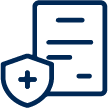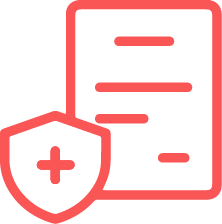The safety of medicines is a fundamental concern in the field of public health, and in Europe, pharmacovigilance plays a crucial role in ensuring that marketed medicines are safe and effective.
In this context, artificial intelligence (AI) is emerging as a powerful tool to enhance the detection and assessment of adverse drug reactions, as well as to strengthen market safety surveillance.
Regulatory Framework in Europe
The regulation of pharmacovigilance in Europe falls under the European Medicines Agency (EMA), which establishes specific guidelines to ensure the safety and efficacy of medicines.
Within this regulatory framework, AI is being increasingly utilized to:
- optimize early detection of safety issues,
- identify emerging patterns of adverse effects,
- and improve informed decision-making by regulatory authorities and pharmaceutical companies.
AI Tools and Systems in Pharmacovigilance
VigiBase
One of the main sources of information in this field is VigiBase, the World Health Organization’s (WHO) global database of adverse drug reactions, which uses AI algorithms to analyze large volumes of safety reports and detect emerging patterns of adverse effects worldwide.
Addressing Privacy Concerns
Similarly, EudraVigilance, the European Union’s adverse reaction reporting system, employs machine learning algorithms to identify potential safety signals from data collected from patient and healthcare professional reports.
SIGNAL
Additionally, tools like SIGNAL, developed by the IMI WEB-RADR Consortium, use AI models to predict potential risks associated with specific drugs, allowing initiative-taking safety interventions.
ADESSA
On the other hand, ADESSA (Automated Detection of Signals for Adverse Events), developed by the Spanish Agency for Medicines and Health Products, uses AI algorithms to continuously monitor pharmacovigilance data and detect adverse events quickly and efficiently.
Applications and Benefits of AI in Pharmacovigilance
The implementation of AI in pharmacovigilance is subject to current health and technology legislation in Europe. The EMA and other regulatory agencies are working to establish clear guidelines on the use of AI in this field, including algorithm validation, data interoperability, and patient privacy protection.
Challenges and Considerations
In summary, artificial intelligence is transforming pharmacovigilance in Europe, enhancing the ability to detect and prevent safety issues in medicines.
These advances, supported by robust legislation and regulation, promise a safer and more efficient future for the pharmaceutical industry and public health in general.
About the Author
This text has been written by an AI (yes, by ChatGPT!). As a versatile tool, ChatGPT can assist in drafting documents, analyzing data, and much more.
Additionally, the AI tools described here are part of our work at the QbD Group, contributing to the safety and efficacy of medicines through the advanced use of innovative technologies.
Do you need support with implementing AI solutions for pharmacovigilance in your organization? Our experts are happy to help.







.png?width=109&height=108&name=Pharma%20(2).png)
.png?width=111&height=108&name=Medical%20Devices%20(2).png)
.png?width=84&height=107&name=IVD%20(2).png)



.png)





